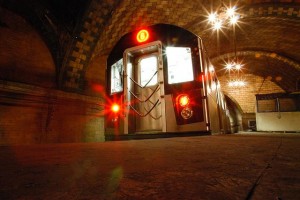
Subway accidents happen all the time in New York City, and in many cases the victims are not responsible.
Expert New York subway accident lawyer Bartly Mitchell, comments on recent subway deaths in Queens. There are many reasons why these subway tragedies occur, and Bartly offers legal insight into these situations as well as the options for injured victims or survivors of someone fatally injured.
Four Tragic Deaths
On average, 150 people are struck by a train in the New York City subway system each year. But in January of 2012, four people died in the New York subway system over a period of just 24 hours. While the incidents were unrelated, the number is staggering, and shows just how dangerous the New York subway system can be.
The subway is a necessary and a vital part of New York life. The New York City subway system is said to be the sixth biggest in the world with more than 5,000,000 daily riders on an average weekday. There are 468 stations and more than 600 miles of track. New Yorkers rely on the subway to get them to work and to school.
According to the Wall Street Journal, the first death occurred when an elderly man fell down the station steps while trying to catch the R train at a station in Elmhurst, Queens very early in the morning. The death was ruled to be an accident. However, this situation illustrates the fact that many different kinds of dangers exist in subway stations. Slippery, broken, or dirty stairs can put many at risk of broken bones, head injuries, and in this case, death. In one of our previous cases against the Transit Authority, we obtained an $828,000 jury verdict for a Bronx woman who fell on broken subway steps and suffered ankle fractures.
Only a few hours after the fatality at the “R” station, a young man in his 20s named Brian O’Mara was struck by an L train near the Union Square station in Manhattan. According to news reports the young man was observed standing on the tracks before the accident. Investigators do not believe foul play was involved. Later the same day a third death occurred, though the actual time of death is somewhat unclear to investigators. An MTA employee found a body in the subway tunnel. This accident occurred on the tracks of the A line in Brooklyn.
The fourth and final death occurred in Manhattan, again on the L line. Around 10 P.M., passengers waiting on the platform witnessed an arriving train strike a man and pin him between the subway car and the platform at the Sixth Avenue station. It was unclear how the man got down onto the tracks.
The Dangers of the Subway
It has yet to be determined which of the deaths during this 24-hour period may have been accidental, and which may have been caused as the result of an intentional act by the victim, or foul play. Accidental deaths aren’t common on the New York City subway system, but accidental injuries happen all of the time. In many cases, the injuries are not the fault of the rider, but rather, may be the fault of the train operators or MTA employees. The leading New York subway accident lawyers at Carro, Carro & Mitchell understand that if someone is hurt in a situation which could have been prevented, Transit Authority negligence may be a factor. In this case, the victim, or their family, has the right to sue for compensation for the physical and emotional damage of any injuries sustained, or the financial burden from lost income, medical bills, and more.
In two recent tragic cases, victims were pushed from the platform into the path of a train entering the station. If such an incident occurs suddenly, without warning, and close to the end of the platform nearest the approaching train, the court may find that the train operator had no time to stop. However, Bartly comments that “…New York courts have found that where a train operator could have reasonably prevented the accident, but fails to exercise reasonable care to observe someone on the track and stop in time, then the Transit Authority may be held liable.”
Other dangers occur in the New York City subway system. Passengers have been caught in closing doors and dragged. Riders have stepped into the gap between the platform and train and seriously injured. Although it is rare, there have been a few serious incidents of subway trains colliding or derailing, causing deaths and serious injuries. Although crime on subways is down, people are still robbed and assaulted. Depending on the circumstances, the Transit Authority may be held responsible in a lawsuit.
Advice from a New York Subway Accident Lawyer
Whether you were injured because of the negligent operation of a train, a slippery platform, broken stairs or you are the victim of a crime, you may deserve compensation under the law.
The first thing to do is consult a qualified New York subway accident lawyer. You need a lawyer with experience representing victims who have been injured on a train, or in a station. Here at Carro, Carro & Mitchell, our lawyers have decades of experience successfully representing New Yorkers injured in the subway. We are dedicated to helping victims fight for their rights, and committed to obtaining an award that will help provide for the victim and their family.
Critical Time Limits
Any claim against the MTA or New York City Transit Authority must be filed within 90 days of the injury. If you fail to file within 90 days, you must ask the Court to extend your time, and an extension may not be granted. A Summons and Complaint must be filed and served within one year and ninety days of the injury. If you fail to meet these deadlines your claim will be dismissed. You need lawyers experienced in New York City subway cases who know the law, to make sure your rights are protected.
If you or someone you know has been injured in an accident in the subway system, call us now at (212) 213-5005 to schedule a free consultation.
Read these other blog posts on a crane crash and a ferry crash with expert legal commentary.












